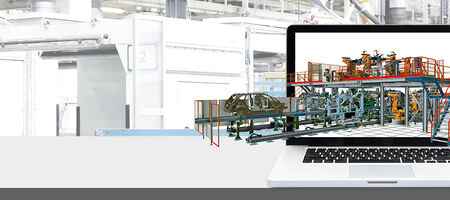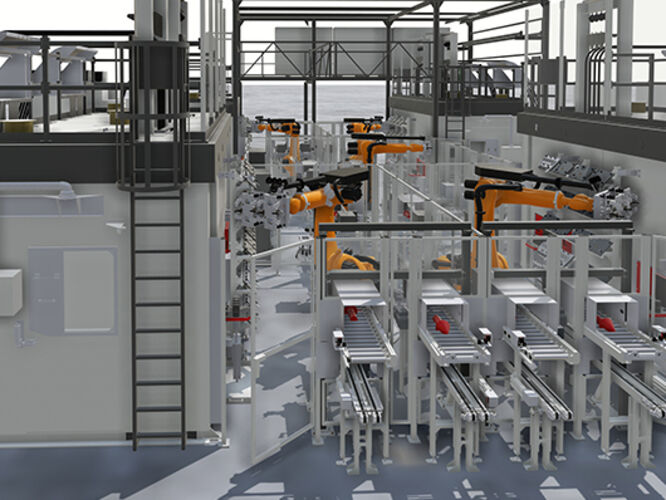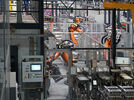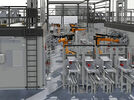With high speed to the digital twinWith high speed to the digital twin

Automated virtual commissioning
In many companies, the engineering process follows a classic workflow: A plant is first planned and designed, followed by the creation of the circuit diagrams and plant electrics, software development, assembly, electrical wiring and commissioning. Subsequently, the developed PLC and robot software is tested or finalized in manual operation on the real plant in order to ensure the defined behavior for the subsequent automatic operation. In this respect, a rethink will have to take place in the companies with regard to the ever advancing "digital engineering" and the associated workflow and data structure optimization in order to be able to continue to exist successfully on the market.
Exploiting the opportunities of virtual commissioning
With the use of a software tool for the creation of a digital plant twin - such as "fe.screen-sim" from F.EE - the engineering workflow is changed from the above described sequentially characterized workflow to a parallel processing. The advantages are obvious: shorter lead times, process validation in an early phase of the design and a commissioning that - based on software tested offline with the digital twin - shines with high time and cost savings. And not only that: "We often notice that - due to the coordination of the departments involved in the engineering process - the internal communication in the companies also changes very much for the better during the implementation of virtual commissioning," says Dipl.-Ing. Peter Meier, head of the department "Software Development Simulation and Virtual Commissioning" at the F.EE group of companies.
And although many companies have already recognized the advantages of virtual commissioning, they still fear the effort supposedly associated with it and ask themselves how the simulation tool can be optimally integrated into their engineering workflow. "In this context, there are also excellent opportunities with regard to the use of existing data as well as automated model creation," explains Meier.
Mastering the flood of data
In order to achieve the goal of virtual commissioning - namely the construction of a model that largely corresponds to the physical plant - a large amount of information and data is required. This ranges from plant layouts to technology schematics of the conveying elements as well as, if necessary, complete robot offline programs. And, of course, the 3D model must be made available in a format that can be read by the simulation software.
In addition to the handling of large amounts of data, the frequent lack of data consistency in the systems used, including information loss and media discontinuity, poses a challenge here. Nevertheless, it makes sense to make use of data material already available in the process when creating digital twins, as this results in enormous time savings, among other things. The efficient use of this data for model creation thus depends to a large extent on the functional scope of the simulation software used. "Another important optimization factor is represented by consistent data preparation and structuring throughout the entire engineering process," adds Peter Meier.
If no data that can be used for modeling is available at an early stage of the engineering process, an idealized model - for example, for initial validation of PLC programming - is first built, which becomes increasingly detailed as the project is implemented.
Using design data
The flexible and direct integration of already existing CAD data from the mechanical design into a simulation tool forms - due to the associated time savings - a decisive component for increasing efficiency in the creation of the digital twin. To avoid information loss, a native connection of common CAD systems to the simulation software is of decisive advantage. This eliminates the often lossy conversion into an intermediate format and ensures that the digital twin contains all data of the later real plant. Other positive side effects of the direct data import are the associated optimization of internal processes and the reduction of cross-departmental coordination efforts while ensuring the best possible flow of information.
For the connection of the components used to the PLC control system, the I/O configuration of the electrical design is transferred to the PLC and from there to the model. Sensible naming makes it much easier to map the PLC variables with the model and also enables the implementation of automatic processes here.
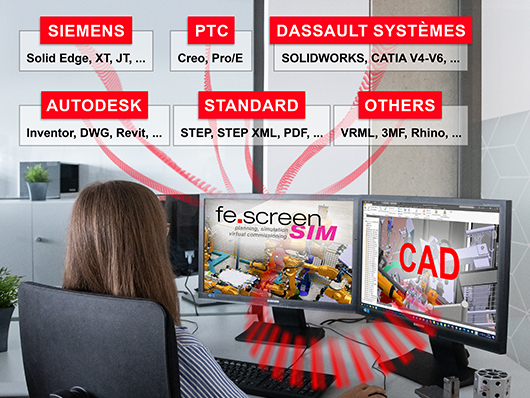
Automation via API
With regard to the automation of virtual commissioning, an application programming interface (API), such as that provided by "fe.screen-sim", is also an important factor.
Most programs used in the engineering workflow today have a macro interface that allows data to be exchanged via the API - not by means of file transfer, but via bidirectional communication between two different programs. "Through the API, own macros, applications, tools as well as information can be integrated into the simulation solution and models can be created automatically," explains the virtual commissioning expert from F.EE.
In addition to the direct macro-based data transfer from a CAD system into "fe.screen-sim", the interface can also be integrated into Excel using VBA code. This enables the fully automatic execution of repetitive steps in the simulation. If, for example, a designation system has been established that enables the creation of an algorithm between mechanical design and electrical design, models can also be created automatically based on this.
Centralized data management crucial
In addition to the possibility of exchanging data via the API, an overarching infrastructure for centralized data storage is also becoming increasingly important. The goal is to keep all information generated in the engineering process centrally and to use it for model creation. This central digitization platform thus serves as a source of information for the digital twin and represents the entire product and process knowledge in the company.
"F.EE has already successfully supported a large number of companies in the introduction of virtual commissioning and the integration of simulation tools into the engineering workflow," says Peter Meier. In this way, companies can benefit from the know-how in dealing with simulation tools from a wide range of manufacturers as well as the advantages of virtual commissioning in combination with an optimized digital engineering workflow.
An opportunity to get to know the F.EE team is offered at this year's "automatica" in Munich from June 27 to 30 (Hall B6, Booth 318).
"Virtual commissioning has become a success factor for us!"
Interview with Jörg Thomas, the Chief Technical Officer (CTO) of KLOTZ GmbH, which specializes in building test benches and assembly systems for automotive steering systems, electrically supported rack and column EPS systems, and their components. The company has been using the simulation tool "fe.screen-sim" for virtual commissioning since 2019.

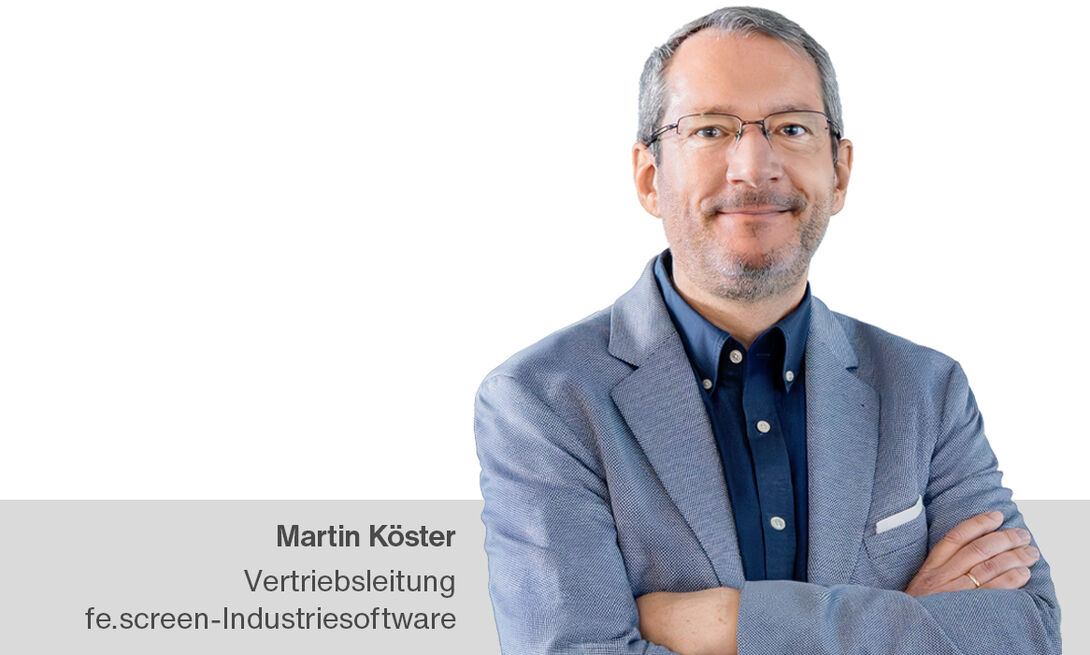
Your personal contact person – for more clearness
You are a project or department manager and are faced with the question of how to set up a digital twin for your project? We would be happy to talk to you personally about your requirements, the time frame, the possible project approach and give you an initial cost estimate.

